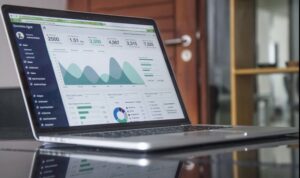In our data-driven world, businesses and organizations are increasingly realizing the value of data in driving strategic decision-making. Progressive analytics, a branch of data analysis, has emerged as a crucial tool for extracting insights from data and staying ahead in an ever-evolving landscape. In this article, we will explore the concept of progressive analytics, its significance, key components, and how it empowers organizations to make informed decisions.

Understanding Progressive Analytics
Progressive analytics is an advanced approach to data analysis that emphasizes real-time, continuous, and evolving insights. It goes beyond traditional business intelligence and static reporting by providing organizations with dynamic and actionable information that adapts to changing conditions.
At the core of progressive analytics is the idea that data is not static; it is fluid, continuously changing, and responding to various internal and external factors. Organizations can harness this dynamic nature of data to gain a competitive edge.
The Significance of Progressive Analytics
Progressive analytics is significant for several reasons:
- Real-time Decision-Making: It enables organizations to make decisions in real time, based on the latest data. This is particularly valuable in fast-paced industries and situations where timely decisions are critical.
- Adaptability: Progressive analytics adapts to changing conditions. It allows organizations to respond quickly to market shifts, emerging trends, and unforeseen events.
- Improved Accuracy: By using the most up-to-date data, organizations can make more accurate decisions, reducing the risk of relying on outdated information.
- Enhanced Agility: Progressive analytics supports an agile decision-making process, enabling organizations to pivot, experiment, and innovate in response to new insights.
- Competitive Advantage: Organizations that embrace progressive analytics gain a competitive advantage by being better equipped to seize opportunities and navigate challenges.
Key Components of Progressive Analytics
Progressive analytics is built on several key components that work together to provide real-time insights:
- Data Integration: Progressive analytics requires the integration of data from various sources, both internal and external. This data may include customer information, market data, social media feeds, and more.
- Real-time Data Streaming: To provide up-to-the-minute insights, real-time data streaming is essential. This component ensures that data is continuously collected and processed as it becomes available.
- Data Analysis Tools: Progressive analytics relies on advanced data analysis tools and techniques, including machine learning algorithms, natural language processing, and predictive modeling.
- Visualization and Reporting: Data visualization tools help organizations understand complex data by turning it into easy-to-interpret visuals, such as charts, graphs, and dashboards.
- Alerting and Monitoring: To support real-time decision-making, alerting and monitoring systems get to notify decision-makers of significant changes or events.
- Data Governance: Strong data governance ensures that data is accurate, secure, and compliant with relevant regulations.
- Scalable Infrastructure: A scalable IT infrastructure is essential to handle the high volume of data and processing required for progressive analytics.
Applications of Progressive Data Analytics
Progressive analytics has a wide range of applications across industries. Here are a few examples:
- E-commerce: In the e-commerce sector, progressive analytics helps businesses track customer behavior in real time, optimize pricing strategies, and enhance the online shopping experience.
- Finance: In the financial industry, progressive analytics covers fraud detection, risk assessment, and high-frequency trading.
- Healthcare: In healthcare, progressive analytics aids in patient monitoring, treatment recommendations, and the identification of disease outbreaks.
- Manufacturing: Manufacturers use progressive analytics to monitor equipment performance, predict maintenance needs, and optimize production processes.
- Marketing: Marketers leverage progressive analytics for real-time campaign optimization, personalized content recommendations, and customer segmentation.
Challenges and Considerations
While progressive analytics offers numerous benefits, it also presents challenges and considerations:
- Data Privacy and Security: Organizations must ensure that sensitive data is protected and that privacy regulations are followed.
- Data Quality: The accuracy and reliability of data are paramount. Organizations must have processes in place to cleanse and validate data.
- Technological Infrastructure: Progressive analytics requires a robust IT infrastructure capable of handling high volumes of data and processing power.
- Skillset: Organizations need personnel with the skills to manage and analyze data effectively.
- Change Management: Embracing progressive analytics often requires a cultural shift within an organization. Teams need to be open to making decisions based on data-driven insights.
Conclusion on Data Analytics
Progressive analytics is a transformative approach to data analysis that empowers organizations to make real-time, data-informed decisions. By harnessing the dynamic nature of data and leveraging advanced technology, organizations gain a competitive edge. They better respond to market shifts, and make more accurate decisions. As the business landscape continues to evolve, progressive analytics will be a critical tool for organizations looking to thrive in an increasingly data-driven world.
